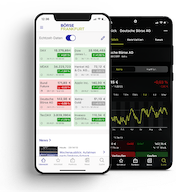"Data manipulation vs. data torture, forecasts vs. mumbo jumbo"

25 August 2025. FRANKFURT (envestor): A few days ago, a DWS analysis landed on my desk: investors can now get more barrels of crude oil for an ounce of gold than they have in five years. The theory behind the calculated gold/oil ratio is that falling oil prices signal a weakening global economy, while the gold price, which is rising from high to high, indicates increasing nervousness among investors, who are presumably anticipating volatile markets. So, are we facing an economic crisis and a correction in risky assets? It's possible. But maybe not. It could be that these two data points capture the complex reality of tomorrow's markets and tell us today what will happen tomorrow. But it could also be that completely different factors will determine the direction of the markets. For example, a noticeable easing of US monetary policy could fuel the bull market. Yes, it could even be that the gold/oil ratio is based on the fact that gold purchases by many central banks have driven up the price of the precious metal. In that case, the link between the two data points, oil price and gold price, would be irrelevant. So are data analyses such as the one above purely a gimmick? Yes and no.
The fact that market movements are often triggered by completely random events – think of the butterfly effect in chaos theory – does not mean that there are no fundamental drivers for the medium-term direction of the markets. Against this backdrop, the number crunching carried out by analysts at DWS is not only harmless, but also legitimate and indeed necessary. After all, putting forward theories is not merely an intellectual exercise, but a prerequisite for weighing up facts, forming an opinion, and ultimately putting together a portfolio that is capable of meeting the challenges of the times. Some theories work out, others, even the terribly clever ones, fail. Anyone who invests is acting under uncertain conditions.
But not everything that is cited is legitimate. Because data manipulation can metastasize into data torture. The DAX is at an all-time high? THE CRASH IS COMING! Data-supported scenario analyses serve to broaden horizons and find the truth, while data torture is one-dimensional, destructive, and often manipulative. Conspiracy theorists first refer to known facts (“The stock markets are at their highest levels in a long time”) and then spread their conspiracy agenda (“The DAX will fall to 8,000 points in three months!”). Facts can therefore be misused. Other data abusers simply want to rip off investors with “pump and dump” methods (“This stock has already doubled in value, it will increase eightfold in the next three weeks!”). Investors should therefore be wary of overly simplistic and bold messages from actual or supposed analysts.
Light-hearted data games can be amusing, entertaining, harmless, or even useful for developing hypotheses and exploring market developments from a different, previously little-explored perspective. Data torture, on the other hand, is agenda-driven and inherently harmful—it is one-dimensional, promotes biased views and operational blindness, and ultimately leads to a dead end. Investors should be open to the arguments of others. Those who do not allow their own opinions to be corrected will, in most cases, achieve poor returns and, in the worst case, even suffer a disastrous shipwreck.
By Ali Masarwah, 25 August 2025, © envestor.de
About the Author
Ali Masarwah is a fund analyst and managing director of envestor.de, one of the few fund platforms that pays cashback on fund distribution fees. Masarwah has been analyzing markets, funds, and ETFs for over 20 years, most recently as an analyst at the research firm Morningstar. His expertise is also valued by numerous financial media outlets in German-speaking countries.
This article reflects the opinion of the author, not that of the editorial team at boerse-frankfurt.de. Its content is the sole responsibility of the author.

More articles from this columnist
| Time | Title |
|---|




